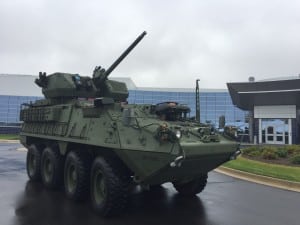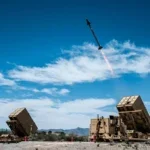
STERLING HEIGHTS, Mich. – Adding a 30mm cannon to the top of a few dozen Stryker vehicles is the first of many steps to transforming the troop carrier into a much more lethal, capable combat vehicle than it was when introduced in 2002.The first of 81 Stryker armed with a Kongsberg remote weapon turret and an Orbital ATK [OA] 30mm cannon rolled off General Dynamics' [GD] production line here on Thursday. After manufacturer and government testing, the vehicles will be…

 By
By 











